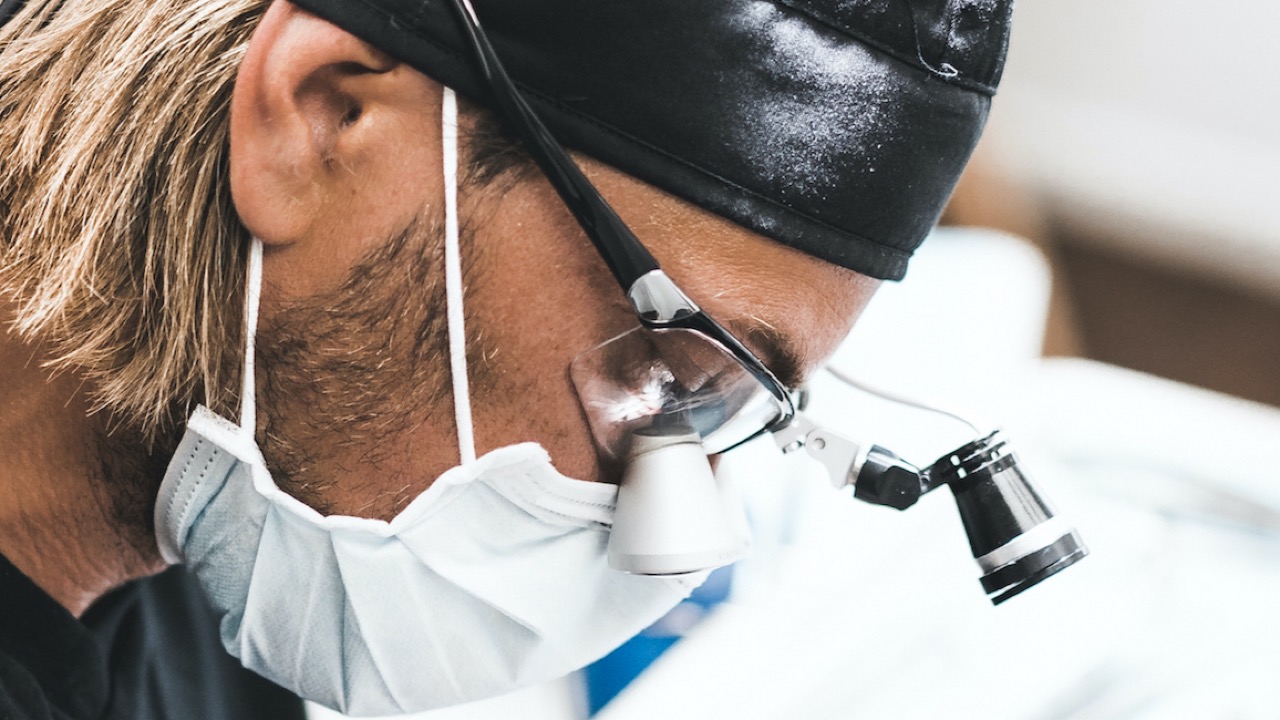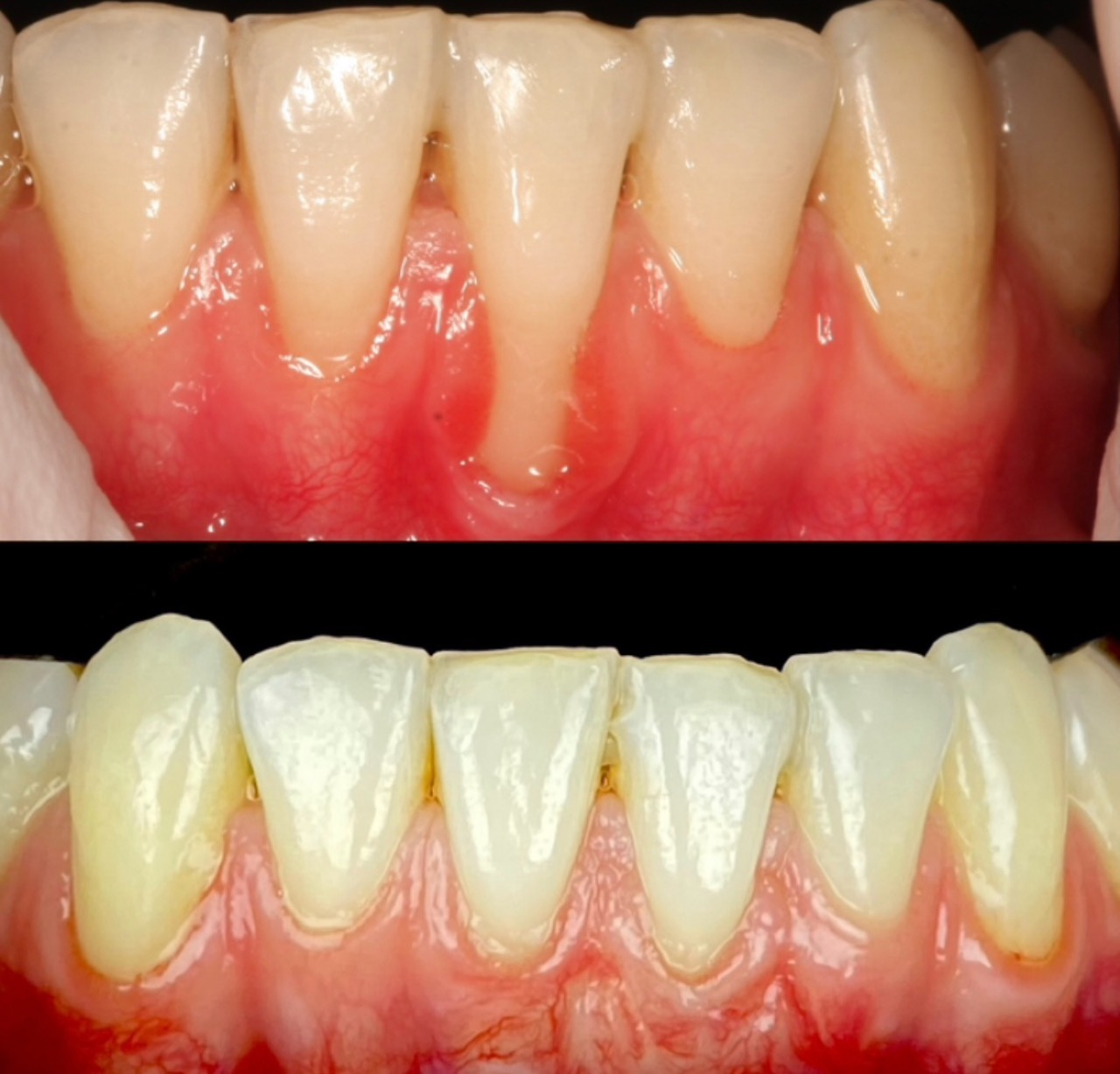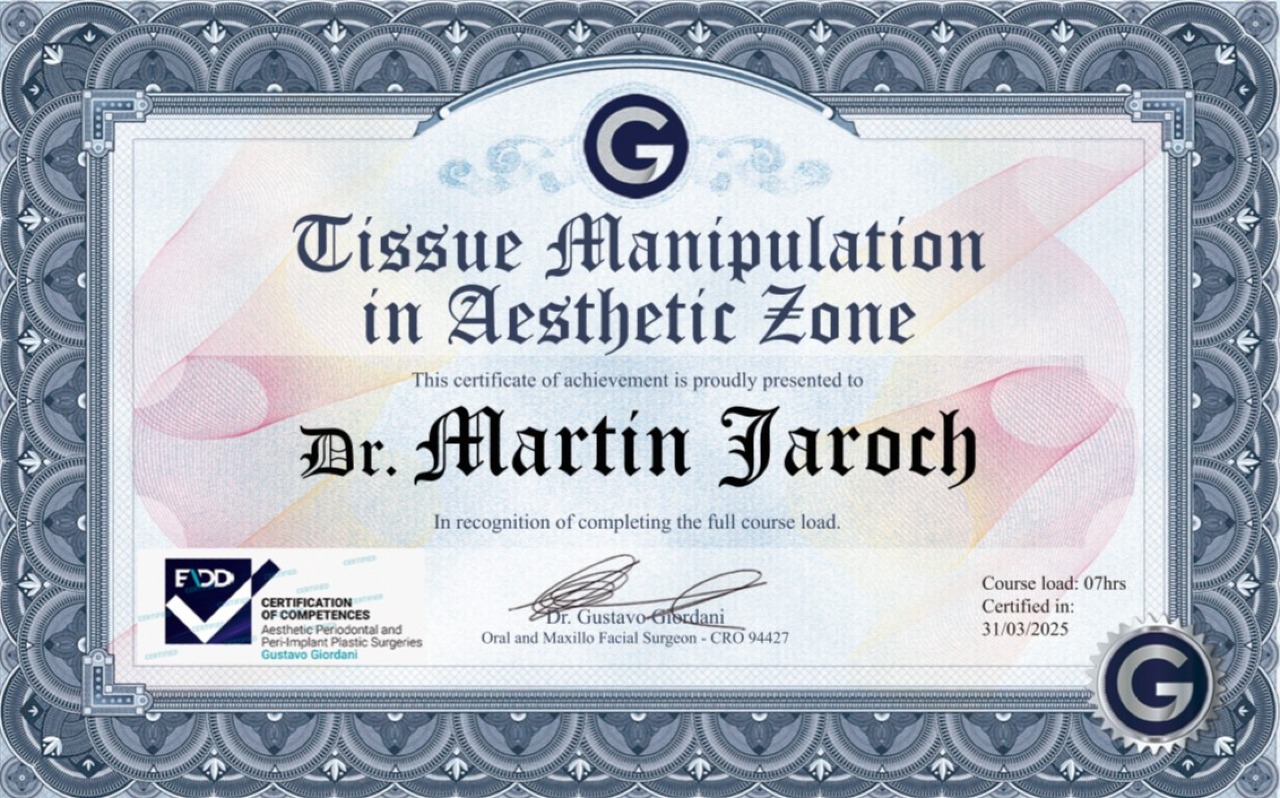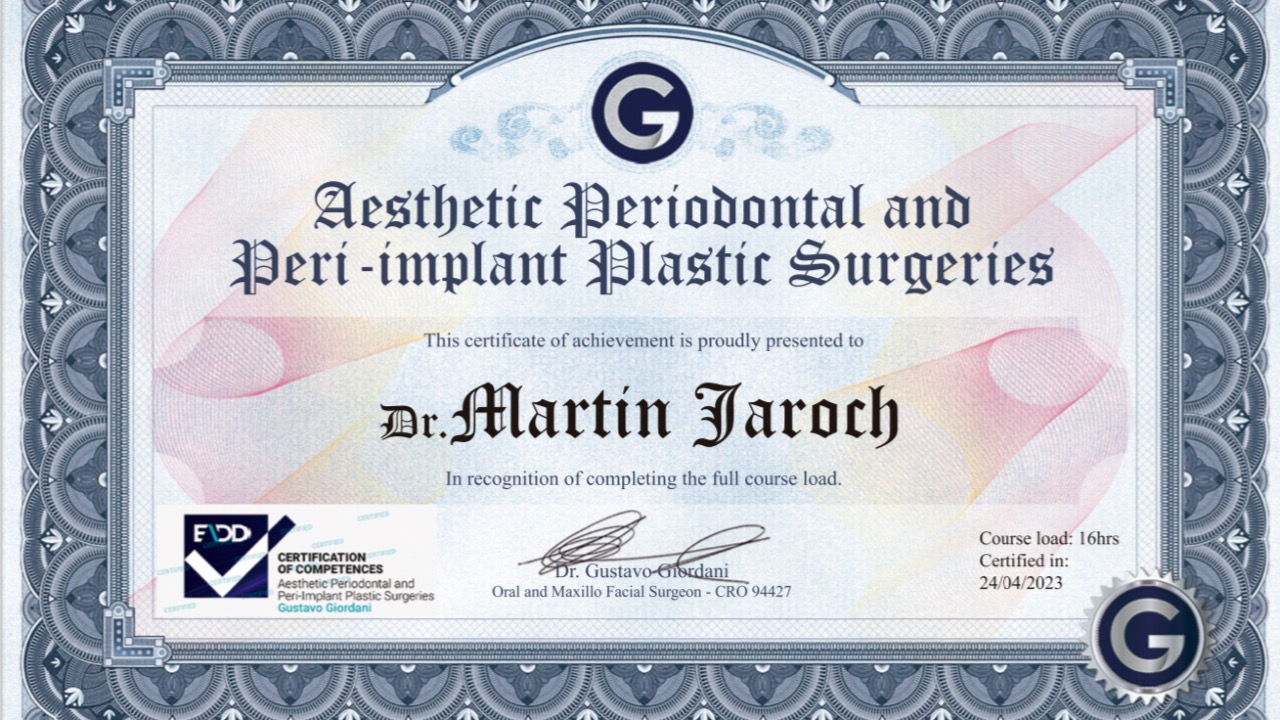Welcome to the Periodontology section of our dental practice in Singen am Hohentwiel! Periodontology is a key specialty in dentistry, focusing on the diagnosis, prevention, and treatment of diseases affecting the supporting structures of the teeth – primarily periodontitis, a chronic condition that affects millions of people worldwide.

Dr. Martin Jaroch, dentist and Master of Science in Periodontology, holds an advanced academic qualification in this field. He completed his postgraduate studies at the University of Freiburg, one of Germany’s leading institutions in dental education, where the curriculum focuses on evidence-based approaches to modern periodontal therapy.
Learn more about the program at:
www.masterparo.de
This advanced training allows Dr. Jaroch to offer periodontal care that is not only clinically sound, but also scientifically up to date and tailored to each patient’s individual needs.
Periodontitis (often referred to as “gum disease”) is a chronic inflammatory condition affecting the gums and underlying bone. It is triggered by bacterial plaque and, if left untreated, leads to gum recession, bone loss, and eventually tooth loss. Research also shows a connection between periodontitis and systemic diseases such as diabetes and cardiovascular conditions.
Early detection & individual risk assessment
Microbiological testing to analyze harmful bacteria
Non-surgical periodontal therapy (e.g. deep cleaning, scaling)
Surgical periodontal treatment when needed
Long-term maintenance programs & regular recalls
Collaboration with general physicians or specialists (e.g. diabetologists), when appropriate
Our practice combines modern scientific knowledge with state-of-the-art technology and a compassionate, patient-focused approach. Our goal is to restore and preserve your gum health effectively and gently, for lasting results.
Situated near the Swiss border, our Singen practice is easily accessible for patients from Schaffhausen, Winterthur, Zurich, and the Thurgau region. Many Swiss patients appreciate our expert care, transparent pricing, and personalized service.
Located near the Swiss border, our practice provides tailored care for patients seeking solutions for gum diseases and periodontitis. Through targeted measures to heal periodontal disease, also known as periodontitis, we aim to help optimize your oral health. Schedule an appointment now and learn more about effective periodontitis treatments for sustainable results.

Also and above all, the receding gums make you appear significantly older. There are procedures with which the gums can be raised in small surgical units so that they completely cover the root. This procedure makes a significant difference and should be carried out when the necks of the teeth are only slightly exposed - because then the surgical effort is significantly lower.

1. What is gum lifting?
Gum lifting is a minimally invasive procedure that reshapes the gum line to cover exposed tooth roots and restore the natural contour of your gums. It improves both aesthetics and tooth protection.
2. When is gum lifting necessary?
Gum lifting is necessary when gums recede due to disease, injury, or other factors, leaving tooth roots exposed. It helps with sensitivity, enhances oral health, and restores a beautiful smile.
3. How does gum lifting work?
During gum lifting, tissue (either natural or synthetic) is used to cover exposed tooth roots. The procedure is performed under local anesthesia and is typically painless.
4. What causes gum recession?
Common causes of gum recession include improper brushing techniques, gum disease (like periodontitis), genetic predisposition, or the natural aging process.
5. Can gums be restored?
Yes, gums can be restored through specialized treatments like gum lifting or grafting. These procedures rebuild the gum line and provide long-term protection for your teeth.
6. How much does a gum correction cost?
The cost of a gum lifting procedure depends on the size of the area being treated and the method used. On average, it ranges from $500 to $1,500 per tooth.
7. How long does recovery from gum lifting take?
Recovery usually takes 1–2 weeks. During this time, you should maintain excellent oral hygiene and avoid hard or spicy foods.
8. Is gum lifting painful?
No, gum lifting is generally painless since the procedure is done under local anesthesia. Mild swelling or sensitivity may occur afterward but typically resolves quickly.
9. Can gum recession be prevented?
Yes, gum recession can be prevented by brushing gently, visiting the dentist regularly, and avoiding risk factors like smoking.
10. What are exposed tooth roots, and how are they treated?
Exposed tooth roots occur when gums recede, leaving the sensitive parts of the teeth uncovered. They can be treated through gum lifting or protective coatings to reduce sensitivity and prevent further damage.
11. Is gum lifting also aesthetically beneficial?
Yes, gum lifting not only improves oral health but also enhances the appearance of your smile by creating a more even and attractive gum line.
12. What are the risks of gum lifting?
Gum lifting is a safe procedure when performed by a specialist. Rarely, mild swelling, infection, or sensitivity may occur, but these issues are manageable.
13. How long does a gum lifting last?
The results of gum lifting are typically permanent, provided you maintain good oral hygiene and no further gum disease develops.
14. Can I get dental implants with gum recession?
Yes, dental implants are possible even with gum recession. However, gum tissue may need to be rebuilt through lifting or grafting beforehand.
15. What is the difference between gum lifting and gum grafting?
Gum lifting involves repositioning the existing gum tissue, while grafting uses tissue from another part of the mouth (like the palate) to strengthen or replace the gum.
We make no shortcuts - I have created a workflow in my dental office in Singen which works for over 15 years - to keep your teeth healthy and your teeth straight.
For more informations about Dr. Jaroch go to his Instagram-Site.
Read the reviews on Google

